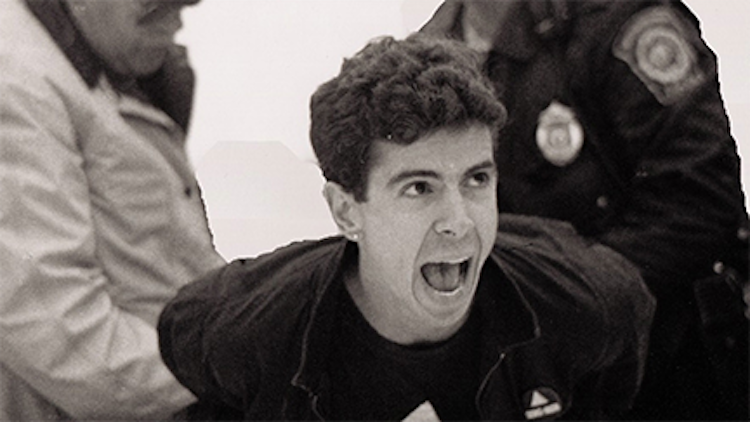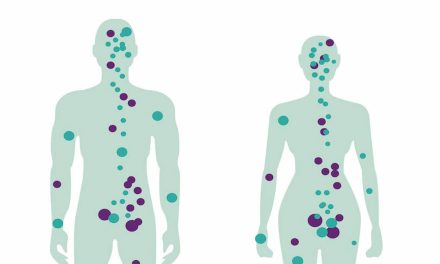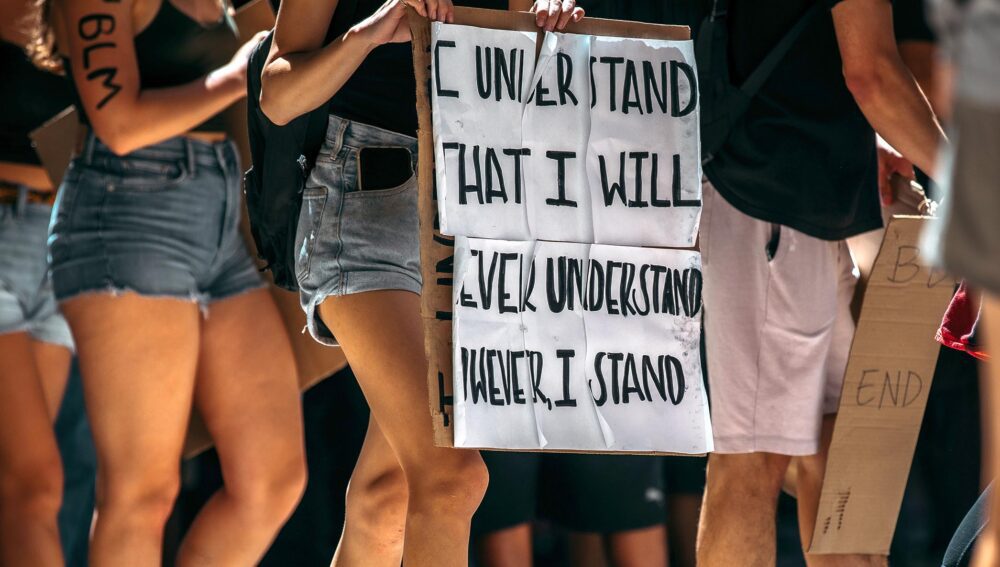Early on in the documentary “How to Survive a Plague,” activist Larry Kramer is shown giving a motivating speech to a group of young New Yorkers. He asks half of the large audience to stand up, then announces, “All of you are going to be dead in six months. Now what are we going to do about that?”
I barely remember the first Bush presidency that started in 1990. But I do remember, as a very young girl, learning about a terrifying disease with no cure.
I remember being way too young to watch “And the Band Played On,” and barely understanding it. And in typical child-centered worry, I wondered if I had AIDS.
Growing up in rural Iowa on a farm in the middle of nowhere, my parents assured me I most definitely did NOT have AIDS, that it was a disease that only affected others. Not me. Never us.
Flash forward to today. Pride at FilmScene takes us back to the early days of the AIDS crisis, with David France’s award-winning documentary “How to Survive a Plague,” a film that chronicles the activist group ACT UP (AIDS Coalition to Unleash Power).
Since my early childhood fears, I’ve never given much thought to the huge impact of HIV drugs, and how they’ve enabled people infected with HIV to live long and healthy lives. Likewise, I’ve thought little about why it took so long for the right drugs to make it to the masses. Or why so many of those infected still do not have access to the proper AIDS/HIV treatment.
This documentary shocked me with information. For instance, I had no idea until “How To Survive a Plague” how close America came in the 1980s and 1990s to putting AIDS victims in internment camps and tattooing their disease status on their arms.
While this documentary doesn’t answer all of my questions about AIDS/HIV, it answers a lot of them. And it tells us about people coming together “in anger” to force change and educate the ignorant.
While this documentary doesn’t answer all of my questions about AIDS/HIV, it answers a lot of them. And it tells us about people coming together “in anger” to force change and educate the ignorant.
Lisa Skriver
ACT UP was a group of HIV-positive people trying to save their own lives, who realized they also had to fight to save the lives of those who came after them. That is the most shocking part of this film, seeing severely sick and dying people using their bodies to protest by lying down in the streets. Doing all they could to get word out that this disease was killing people en masse.
The film uses mainly archival footage interspersed with current and older interviews of those who led the movement. This approach is confusing at times as a viewer new to the material, but it does add great dramatic effect by immersing you into that time and place.
“How To Survive a Plague”’s obviously about the fight against AIDS, but it’s also a social model for how to organize, protest and create civil disobedience and affect change. We are able to watch experienced ACT UP activists teach newbies how to link arms so it was harder for police to arrest them. We watch saves of protests staged on every corner.
“How To Survive a Plague” is showing 6 p.m. Monday, Apr. 22, as part of Pride at FilmScene, 118 E. College St., Iowa City.
This was at a time when people were dying and it seemed as if no one but ACT UP was doing anything to help. AZT was the only drug on the market, and it was ineffective and exorbitantly priced. ACT UP members literally wrote the treatment plan for AIDS on a bus coming back from a protest.
The survivors of the epidemic appear at the end of the film to speak about the energy and the life-and-death importance of the movement. Some state it was their entire social circle. They shared how being surrounded by people you implicitly trust makes activism and protest and being vulnerable to arrest and threats much easier and more effective.
One of the film’s most powerful moments is when the Cardinal of the Catholic Church in New York speaks out against using condoms for safe sex, at the same time he spoke out against abortion rights. This led to ACT UP and women’s groups joining for a massive “Stop the Church” protest.
The two groups also staged a “die in” at St. Patrick’s cathedral during Sunday mass. While the Cardinal sat on the pulpit with his head in his hands, one protestor after another protestor silently fell in the aisle, vividly demonstrating their point that the cardinal’s failture to condone safe sex would contribute to the death of many.
It’s hard to think that so many of those warriors of the late 80’s and early 90’s succumbed to AIDS, millions worldwide. Many of those in this film’s footage knew they would not survive before a cure for AIDS was found.
This documentary is an eye-opening look at how civilians can come together to affect change. As it’s said in the film, it has happened before, and it will happen again.







